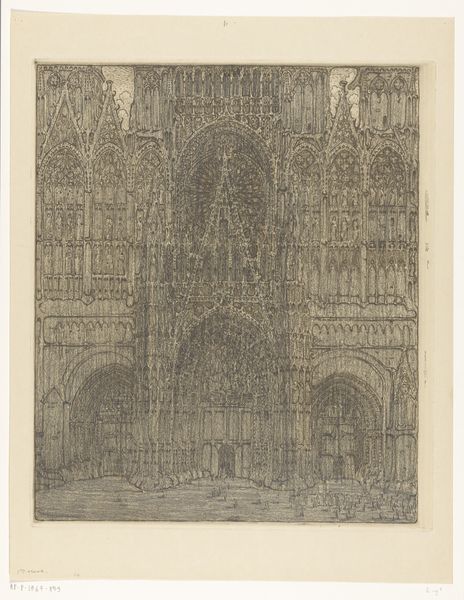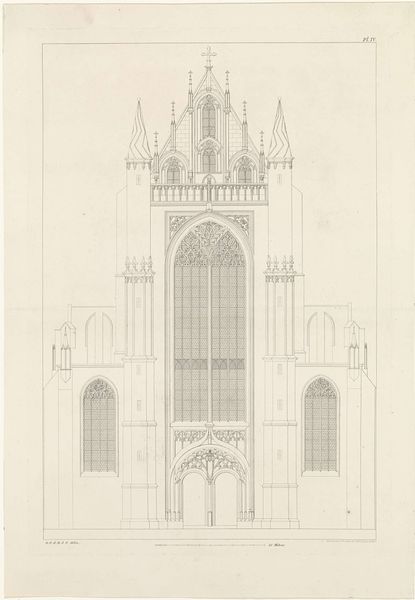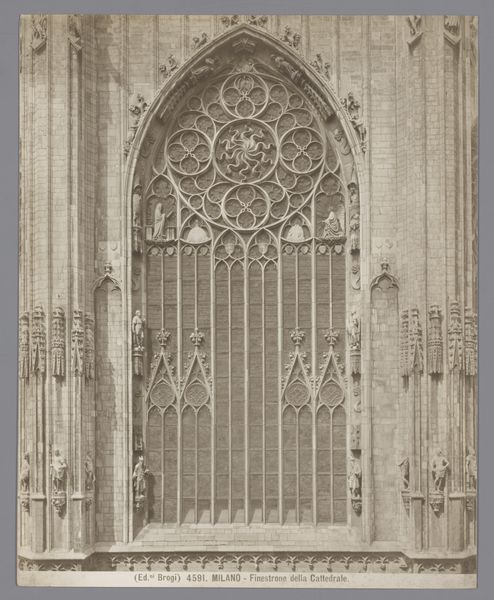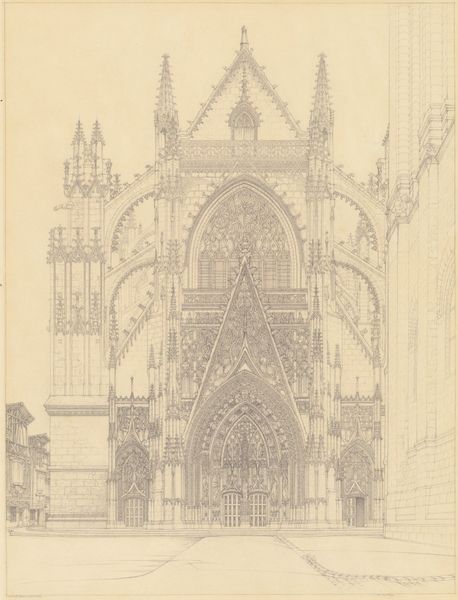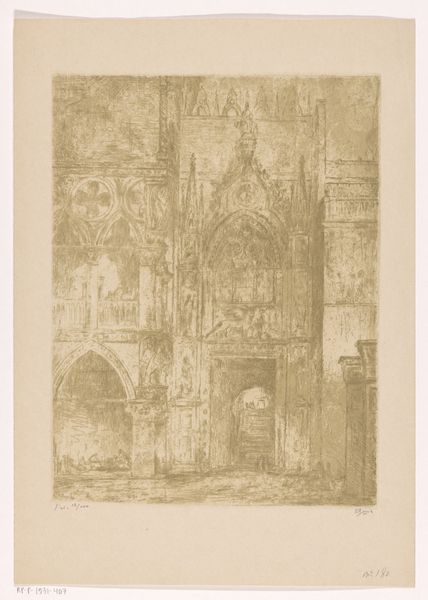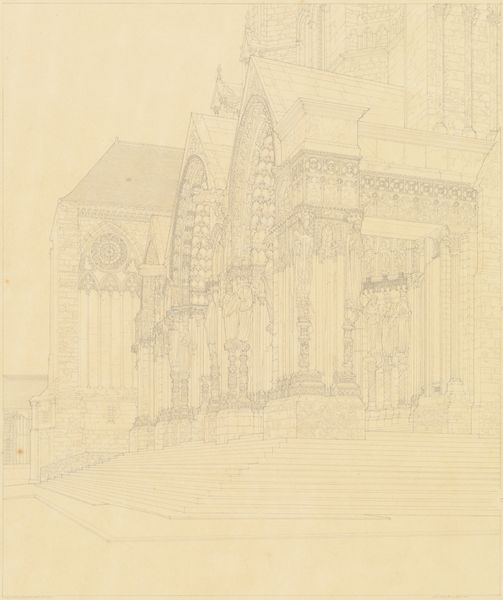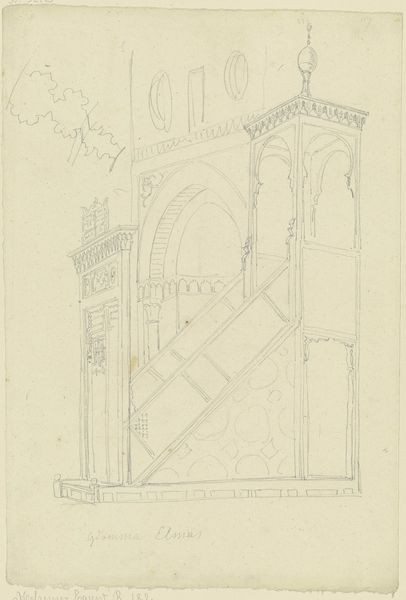
drawing, print, engraving, architecture
#
drawing
# print
#
landscape
#
perspective
#
romanesque
#
geometric
#
line
#
engraving
#
architecture
Dimensions: height 361 mm, width 243 mm
Copyright: Rijks Museum: Open Domain
Emil Edmond Ollivier made this drawing of a church interior sometime before his death in 1864, using graphite on paper. Look closely, and you’ll notice the fineness of the line. Graphite allows for an incredible level of precision. The artist has taken full advantage of this quality, rendering the complex gothic architecture with close attention to detail. The evenness of the lines suggests that Ollivier may have been using a ruling pen, an instrument that creates consistent, controlled lines and was used for technical drawing. Notice how the graphite captures the quality of light. The translucence of the graphite gives a luminous quality to the illustration, while the shadows give a sense of depth. This is not just a feat of artistic skill; it’s also a testament to Ollivier’s deep understanding of his materials. This drawing offers insights into the time-consuming and highly skilled labor that went into both the original architecture and its subsequent documentation. By considering the materials, we can better appreciate not only the aesthetic qualities of this drawing but also the cultural values it represents.
Comments
No comments
Be the first to comment and join the conversation on the ultimate creative platform.

